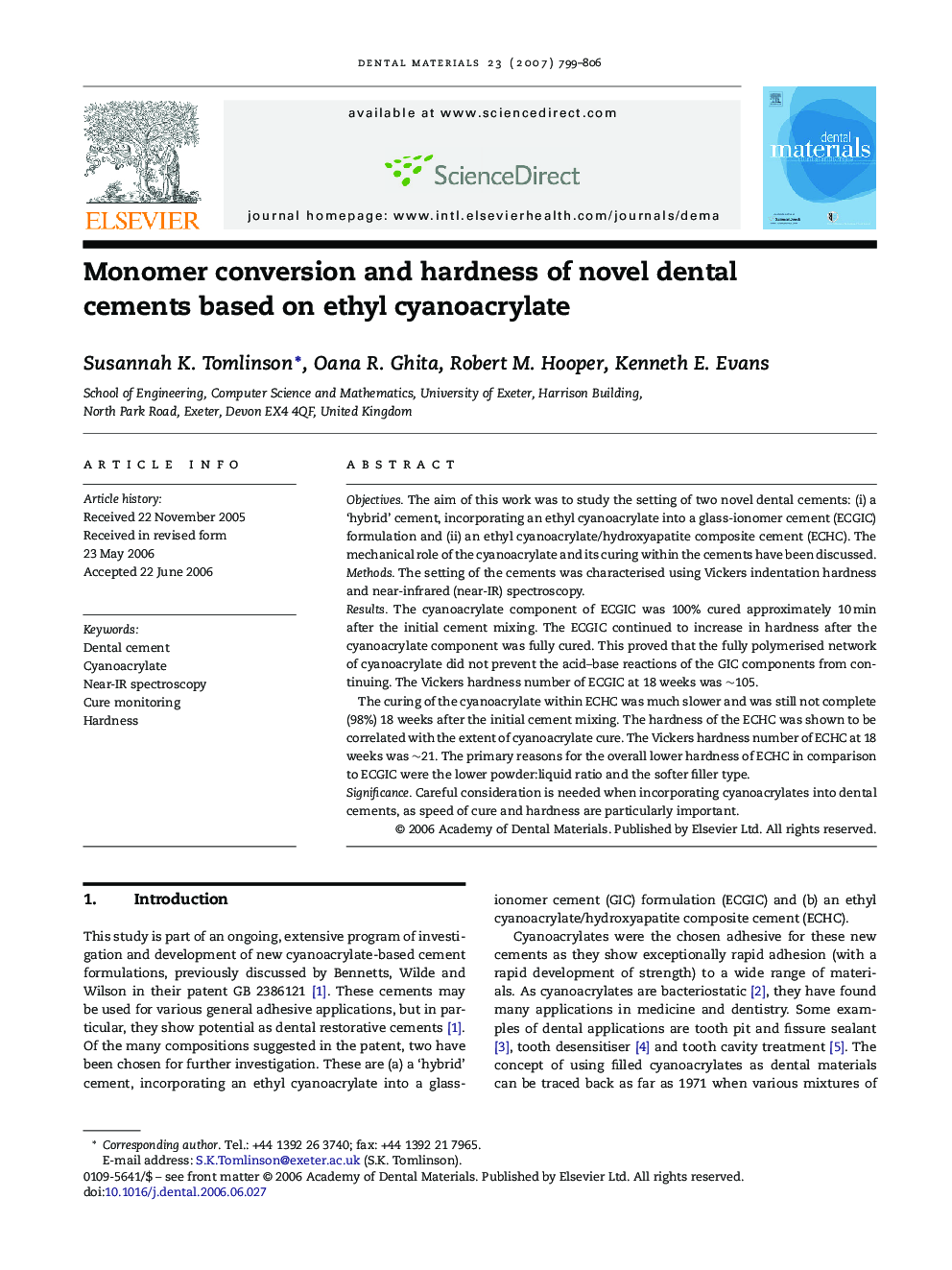| کد مقاله | کد نشریه | سال انتشار | مقاله انگلیسی | نسخه تمام متن |
|---|---|---|---|---|
| 1423005 | 986473 | 2007 | 8 صفحه PDF | دانلود رایگان |

ObjectivesThe aim of this work was to study the setting of two novel dental cements: (i) a ‘hybrid’ cement, incorporating an ethyl cyanoacrylate into a glass-ionomer cement (ECGIC) formulation and (ii) an ethyl cyanoacrylate/hydroxyapatite composite cement (ECHC). The mechanical role of the cyanoacrylate and its curing within the cements have been discussed.MethodsThe setting of the cements was characterised using Vickers indentation hardness and near-infrared (near-IR) spectroscopy.ResultsThe cyanoacrylate component of ECGIC was 100% cured approximately 10 min after the initial cement mixing. The ECGIC continued to increase in hardness after the cyanoacrylate component was fully cured. This proved that the fully polymerised network of cyanoacrylate did not prevent the acid–base reactions of the GIC components from continuing. The Vickers hardness number of ECGIC at 18 weeks was ∼105.The curing of the cyanoacrylate within ECHC was much slower and was still not complete (98%) 18 weeks after the initial cement mixing. The hardness of the ECHC was shown to be correlated with the extent of cyanoacrylate cure. The Vickers hardness number of ECHC at 18 weeks was ∼21. The primary reasons for the overall lower hardness of ECHC in comparison to ECGIC were the lower powder:liquid ratio and the softer filler type.SignificanceCareful consideration is needed when incorporating cyanoacrylates into dental cements, as speed of cure and hardness are particularly important.
Journal: Dental Materials - Volume 23, Issue 7, July 2007, Pages 799–806